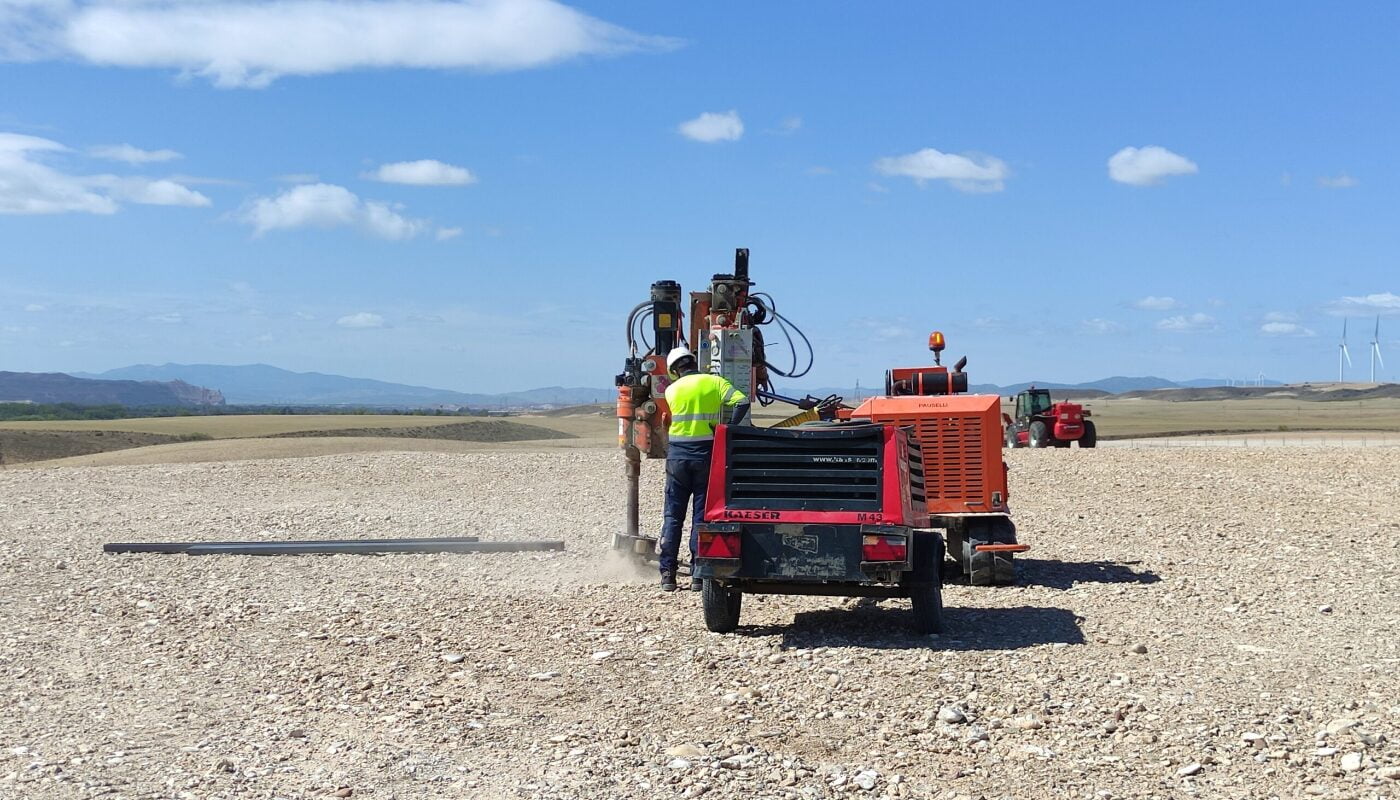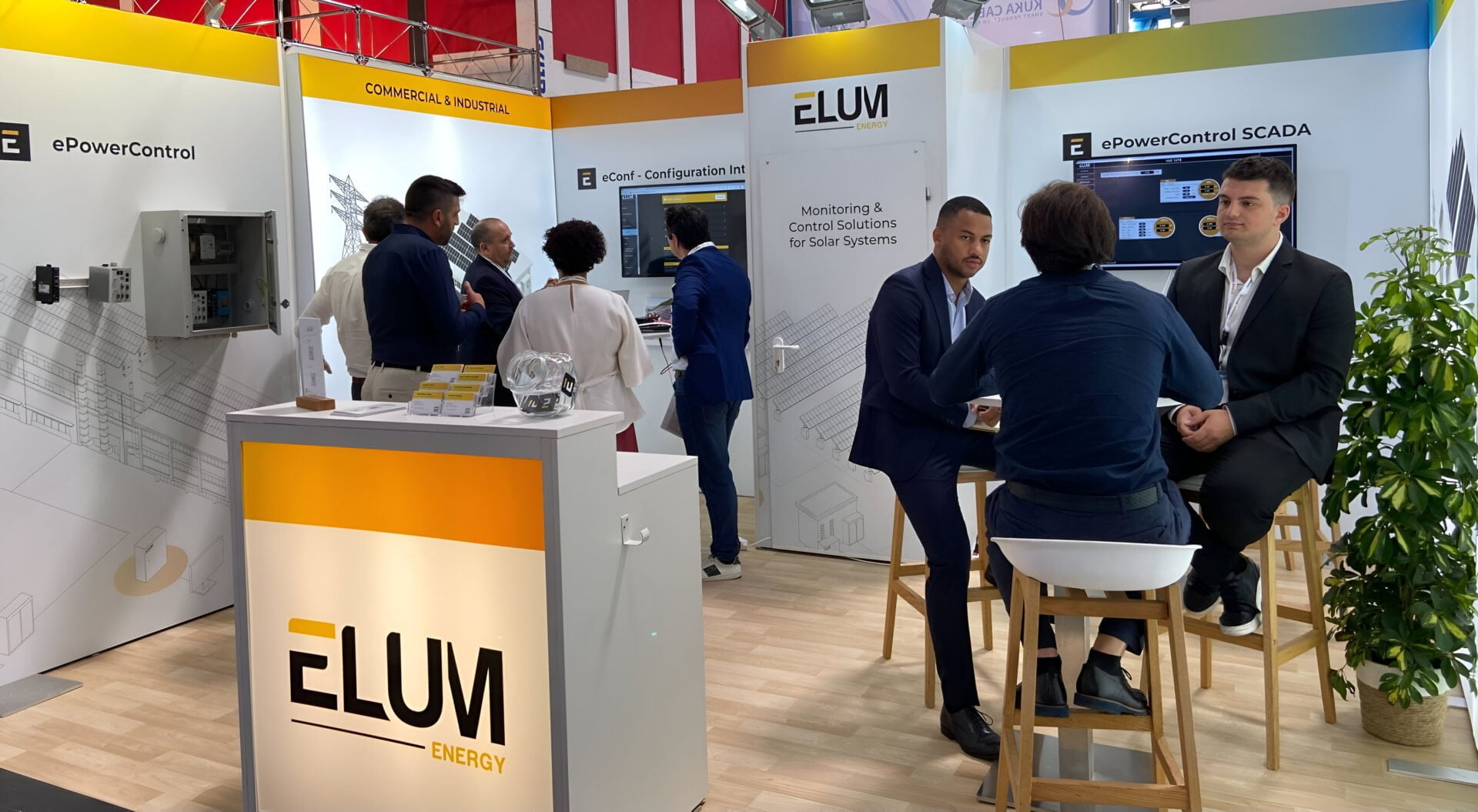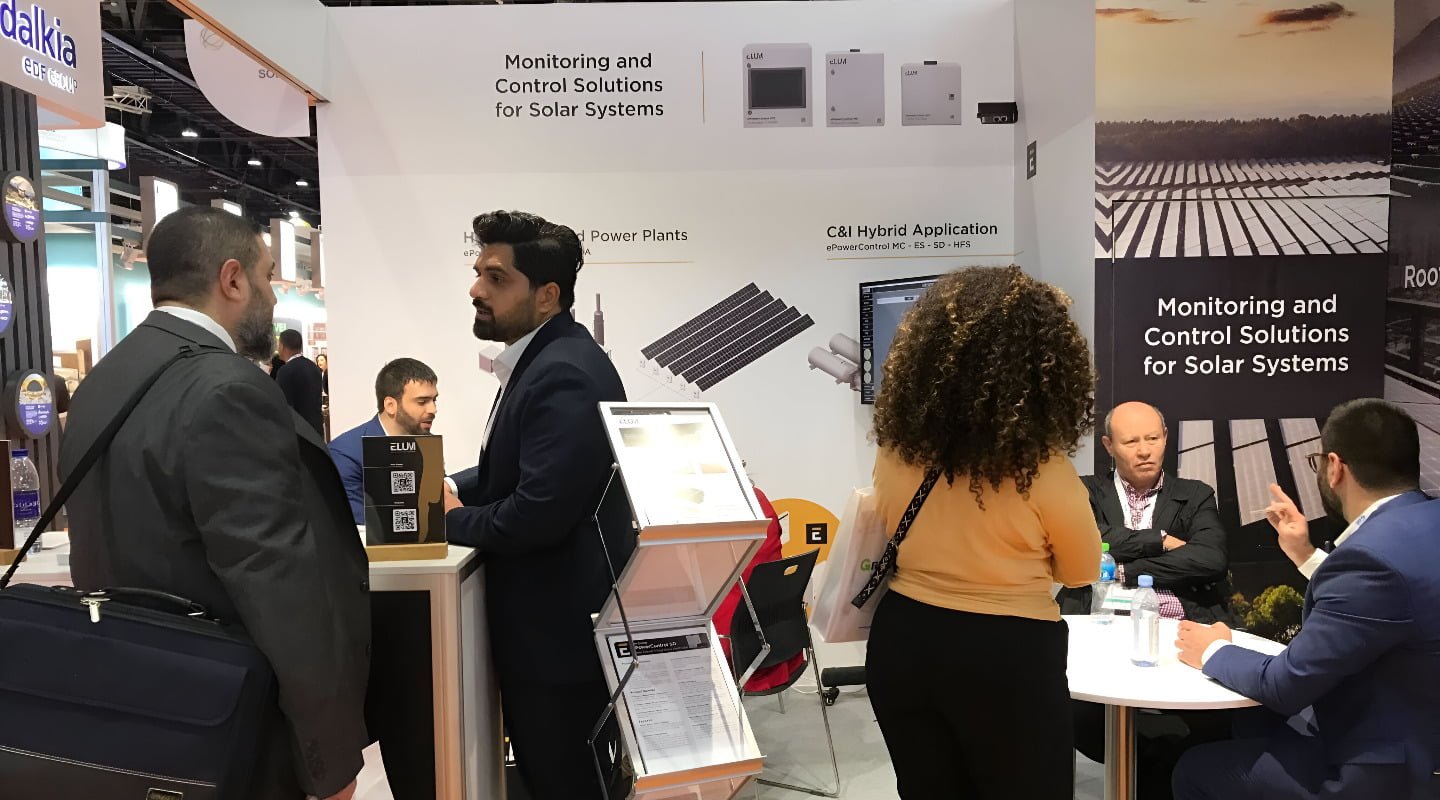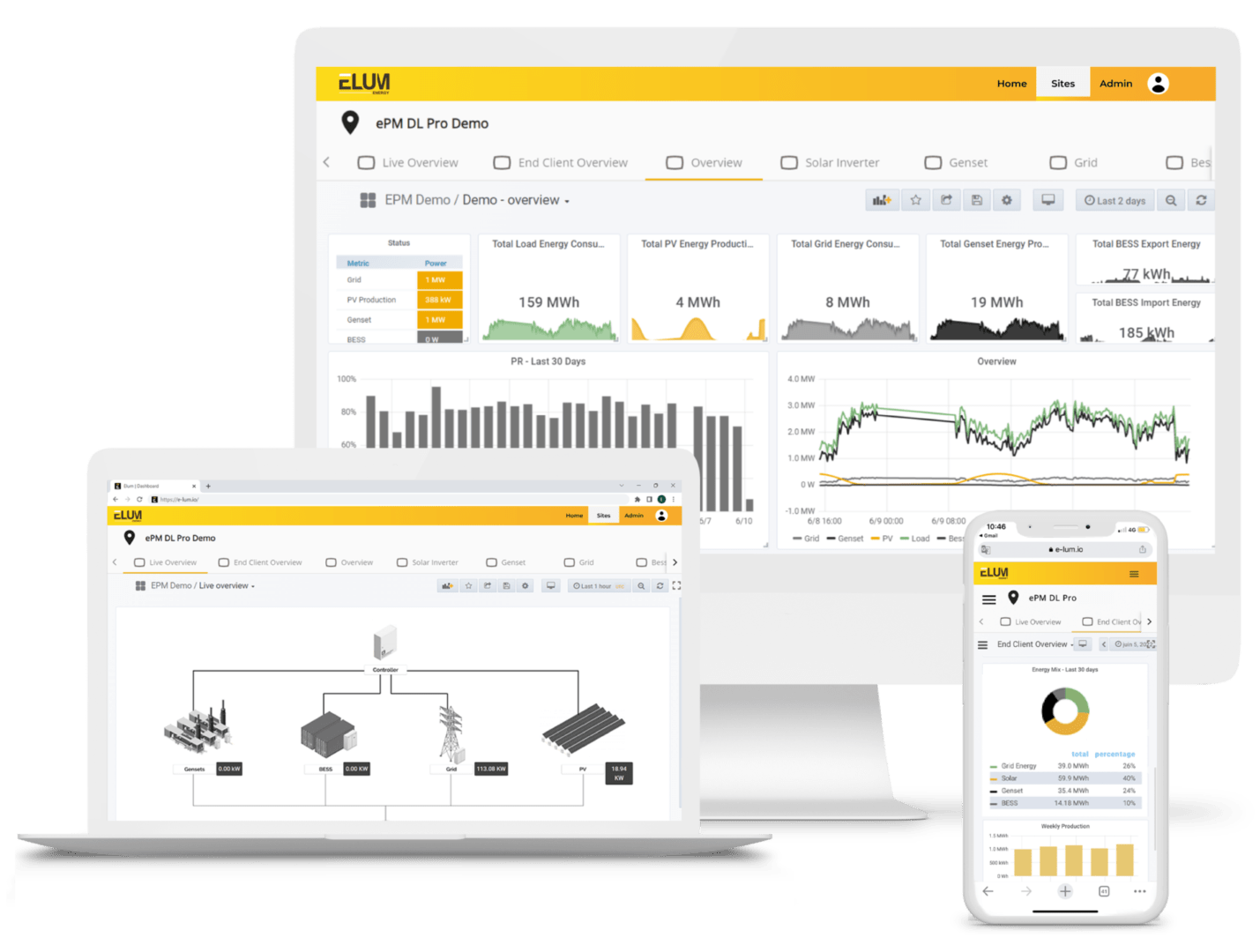Part 2: Solar + BESS System with Genset Backup: How to Manage Microgrids
Introduction:
Welcome back to our four-part series on how to effectively manage microgrids to power Commercial and Industrial buildings. This second article will focus on a configuration encountered in many countries and territories connected to an unreliable grid: the hybridization of a backup genset system with Solar + BESS.
In these four articles, we give you our best practices for controlling microgrids in different situations and configurations. If you missed the first article, click here to read and learn more about load shifting.
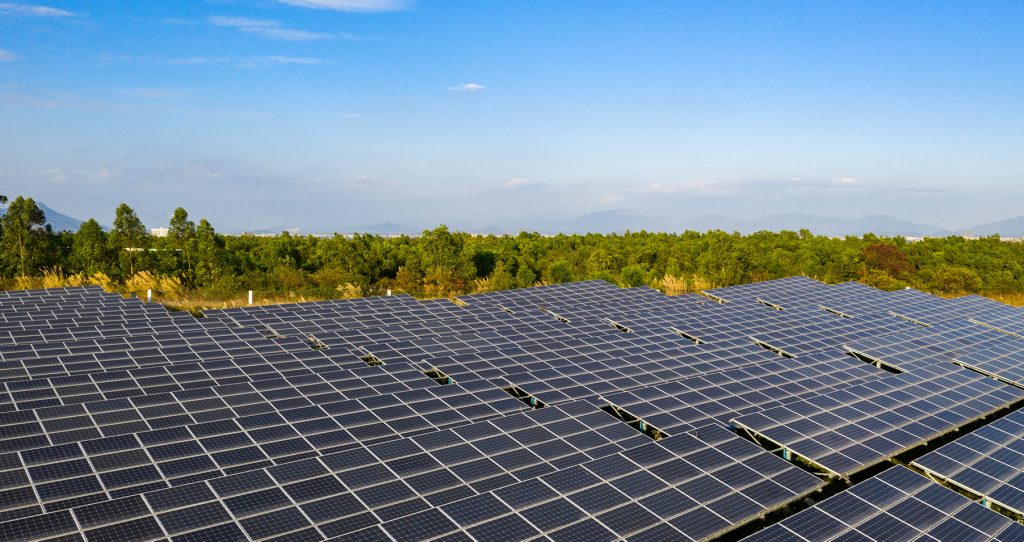
But first, what is a microgrid?
Feel free to jump to the next section if you are already familiar with this concept.
A microgrid is an energy distribution network that relies on local electricity production. It is designed to operate independently or in synchronization with the national grid within a defined area.
For a deeper dive into the concept of microgrids, here are two articles that might interest you:
Microgrid controller operational mode
The democratization of hybrid systems is fueled by the value that solar + BESS bring to C&I sites. That value can be presented in four main advantages to hybridization:
Increasing renewable penetration:
→ When PV > Load, the EMS can store the excess in the BESS, reducing the curtailment of the PV.
→ When Genset Power < 30% the EMS can store a part of the PV produced in the BESS.
Limiting power outage impacts such as a decrease in productivity, the shutting off or malfunction of the machinery, the damage to equipment.
Stabilizing the grid for reliable and stable power supply.
Keep fuel consumption to a minimum as solar PV + storage energy production is often cheaper than fuel. Adding storage enables using electricity during the night when the consumption is higher and not using the backup genset. It also allows for being less reliant on diesel resupply.
In a microgrid with a poor grid, solar PV, BESS, and genset(s) backup, there are two main operational modes:
- Grid-connected mode:
The utility grid is available; therefore, the genset plant is offline. The grid forms the network while the PV and BESS are in grid-following mode.
When the grid forms the network, it means that the PV and BESS follow the grid voltage and frequency.
- Genset back-up mode:
In this case, the utility grid is down, and consequently, the genset plant is online. The genset forms the network, and the PV and batteries are in grid-following mode.
In this case, the genset sets the voltage magnitude and frequency of the islanded microgrid.
The microgrid controller will automatically control the use of the genset to improve the microgrid’s reliability and keep fuel consumption to a minimum. We advise using a microgrid controller like the ePowerControl MC and a monitoring platform such as ePowerMonitor to manage your microgrids efficiently.
An energy storage controller will manage the charging and discharging cycles of the BESS, ensuring optimal performance and longevity of the battery storage system.
To optimize your microgrid use and maximize your system’s performance and profitability, contact one of our microgrid experts here.
the Contact us industry ?
What is the business case for this application of microgrid?
For years diesel generators have been the standard emergency backup power for commercial and industrial buildings. A few years ago, it was even the most economical option for most systems above 150kW. It used to be the first choice because of its simplicity and efficiency. But with an increased focus on low-carbon solutions and a steep drop in the levelized cost of renewable energy and storage, hybrid systems are democratizing.
With various power generation and energy storage options, buildings can be more resilient to power outages in the long term. Solar + BESS can provide near-instantaneous backup power at a lower price than diesel while also giving the advantage of the separation between resource availability and exploitation of solar energy.
This application’s best usability case is the hybridization of a grid-tied coupled to a diesel system as a backup with solar + BESS. This type of microgrid is most suited for a bad grid that suffers many outages and where there is a concern about electrical reliability.
There are as many reasons to hybridize diesel with solar and battery storage as there are different projects. For example, you can find below one of our projects which perfectly represents the use of a controller for a solar-diesel-BESS system tied to a weak grid.

Read on for the third article about off-grid Solar BESS Genset applications.


